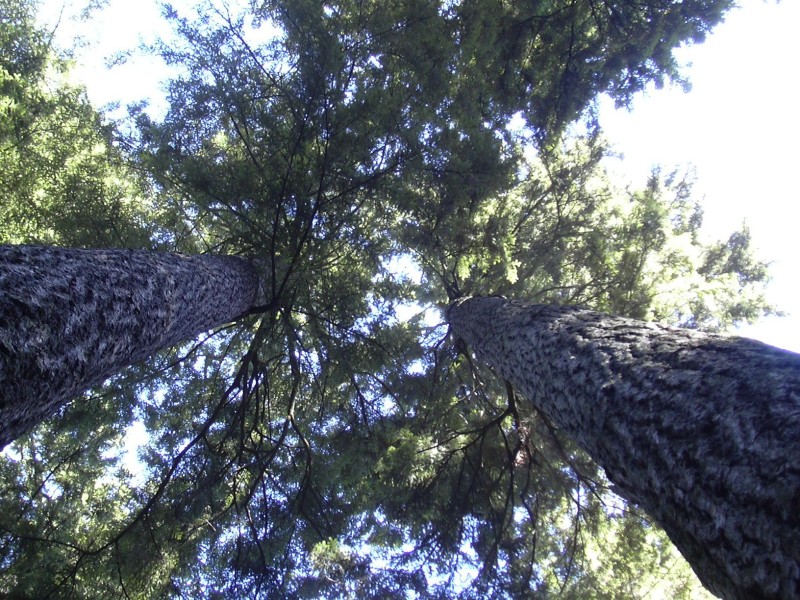Nature:树木生长无上限
来自29所研究结构的38位研究人员合作发现,来的误解相反,树木在它们的一生中,从来没有停止过生长。事实上,随着年龄的增长,它们的生长反而加速,即使它们已经达到了庞大的尺寸。相关文章发表于2014年1月15日的《Nature》杂志上。

Nature:树木生长无上限
一项新的研究发现,与长期以来的误解相反,树木在它们的一生中,从来没有停止过生长。事实上,随着年龄的增长,它们的生长反而加速,即使它们已经达到了庞大的尺寸。这意味着,年龄更大的树木,在地球的碳循环(使地球能够维持生命的循环之一)中,发挥着实质性和不相称的重要作用。
来自29所研究结构的38位研究人员合作进行了这项研究,其中包括中科院沈阳应用生态研究所的王绪高和郝占庆。美国内布拉斯加林肯大学生物学家Sabrina Russo是本文的共同作者,她提供了数据分析方法的开发,以及对结果的分析和解释。Russo的主要研究地点位于婆罗洲岛屿的马来西亚Lambir山国家公园。
在这项研究中,研究人员分析了横跨六大洲、来自不同温带和热带地区的403个树种的673,046棵树的汇集生物量的生长测量。他们推断,对大多数树种来说,随着它们的尺寸增加,大规模的生长率也继续增加,一些物种中最大的树,仅仅一年的生长速度就相当于中等大小的树。
内布拉斯加林肯大学生物科学学院的森林生态学家Russo说:“通过研究整个森林的数据——就是说,森林中的所有树木都视为同一单位,我们经常发现,随着森林年龄的增加,森林生产力下降,但是那并不意味着,年龄最大的树木的生长就会变得缓慢。理解树木生长的关键是,检测每棵树的生长模式,不只是将森林作为一个整体。”
这项研究成果,除了揭示了树木的生长特性之外,还有助于理解全球的碳循环,因为树木(像所有植物)能够从空气中吸收二氧化碳,并将其固定在生物量中。
Russo说:“一棵树的木材,有大约50%是碳,所以一棵快速生长的、大的古树,能够通过巨大的光合作用通量,去除大气中的大量的碳,这远远超过了一棵更年轻的、更小的树的能力。当它们活着的时候,这些庞大的古老森林,在森林碳动态中发挥着不相称的重要作用。”
原文摘要:
Rate of tree carbon accumulation increases continuously with tree size
N. L. Stephenson, A. J. Das, R. Condit, S. E. Russo, P. J. Baker, N. G. Beckman, D. A. Coomes, E. R. Lines, W. K. Morris, N. Rüger, E. Álvarez, C. Blundo, S. Bunyavejchewin, G. Chuyong, S. J. Davies, Á. Duque, C. N. Ewango, O. Flores, J. F. Franklin, H. R. Grau, Z. Hao,M. E. Harmon, S. P. Hubbell, D. Kenfack, Y. Lin et al.
Forests are major components of the global carbon cycle, providing substantial feedback to atmospheric greenhouse gas concentrations1. Our ability to understand and predict changes in the forest carbon cycle—particularly net primary productivity and carbon storage—increasingly relies on models that represent biological processes across several scales of biological organization, from tree leaves to forest stands2, 3. Yet, despite advances in our understanding of productivity at the scales of leaves and stands, no consensus exists about the nature of productivity at the scale of the individual tree4, 5, 6, 7, in part because we lack a broad empirical assessment of whether rates of absolute tree mass growth (and thus carbon accumulation) decrease, remain constant, or increase as trees increase in size and age. Here we present a global analysis of 403 tropical and temperate tree species, showing that for most species mass growth rate increases continuously with tree size. Thus, large, old trees do not act simply as senescent carbon reservoirs but actively fix large amounts of carbon compared to smaller trees; at the extreme, a single big tree can add the same amount of carbon to the forest within a year as is contained in an entire mid-sized tree. The apparent paradoxes of individual tree growth increasing with tree size despite declining leaf-level8,9, 10 and stand-level10 productivity can be explained, respectively, by increases in a tree’s total leaf area that outpace declines in productivity per unit of leaf area and, among other factors, age-related reductions in population density. Our results resolve conflicting assumptions about the nature of tree growth, inform efforts to undertand and model forest carbon dynamics, and have additional implications for theories of resource allocation11 and plant senescence12.

